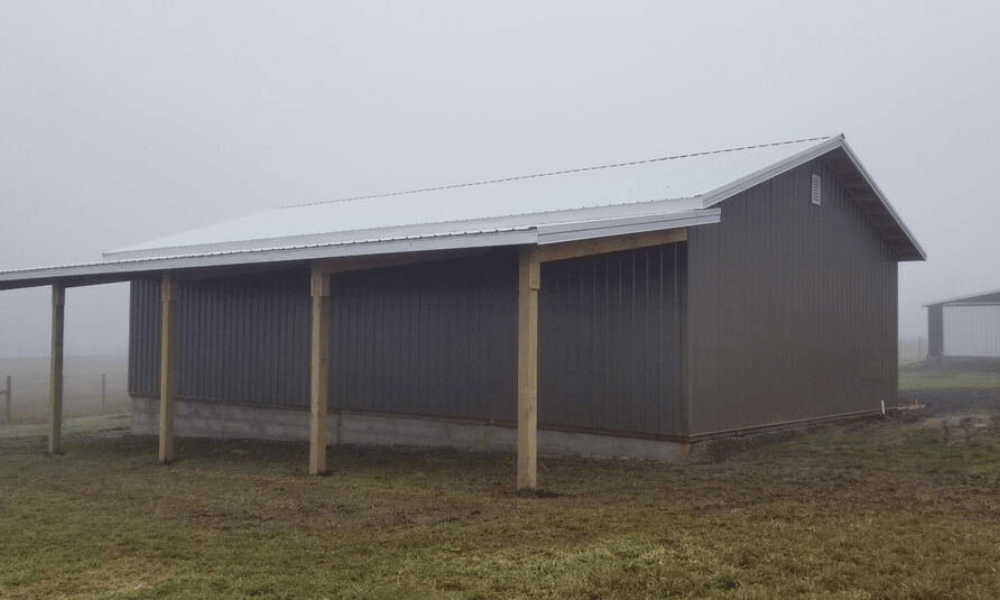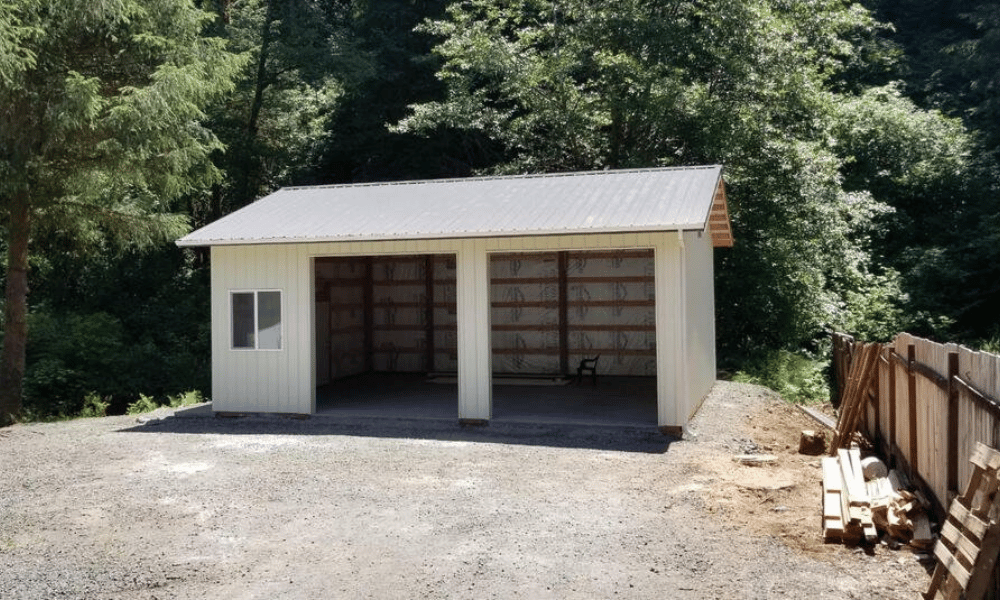In everyday construction, especially when it comes to pole buildings, the roof design plays a pivotal role in determining the overall functionality, efficiency, and aesthetic appeal of the structure. Whether you're a contractor, a DIY enthusiast, or a property owner contemplating a new pole building, understanding how to choose the right roof design is paramount. This comprehensive guide will walk you through everything you need to know about maximizing efficiency in your pole building through effective roof design.
The Importance of Roof Design in Pole Buildings
When constructing a pole building, many individuals overlook the significance of roof design. However, it serves several critical functions:
Weather Protection
A well-structured roof protects against rain, snow, wind, and sun exposure.
Energy Efficiency
The right roofing can contribute significantly to reducing energy costs by improving insulation and ventilation.
Aesthetic Appeal
Roof designs can enhance the visual aspect of your pole building, making it more attractive.
Durability
Various materials and designs offer different levels of durability and longevity.
By prioritizing roof design from the outset, you can ensure that your pole building meets all functional requirements while also being visually appealing.
Choosing the Right Roof Design for Maximum Efficiency in Your Pole Building
To maximize efficiency in your pole building through roof design, consider factors such as climate conditions, intended use of the building, and budget constraints. There are various styles available:
Gable Roofs
Gable roofs are characterized by their triangular shape formed by two sloping sides meeting at a ridge.
Advantages:
- Excellent water drainage Increased attic space Aesthetic versatility
Disadvantages:
- Vulnerable to high winds if not properly constructed
Shed Roofs
Shed roofs have a single slope which is often less complex than gable roofs.
Advantages:
- Simple construction Cost-effective Allows for high ceilings
Disadvantages:
- Limited aesthetic options
Hip Roofs
Hip roofs feature slopes on all four sides which meet at a ridge top.
Advantages:
- Greater stability against wind forces More usable space in attics
Disadvantages:
- More complex construction leading to higher costs
Flat Roofs
Flat roofs are horizontal or nearly horizontal structures offering minimal pitch.
Advantages:
- Easy access for maintenance Can be utilized for outdoor spaces like patios or gardens
Disadvantages:
- Poor drainage can lead to leaks if not designed correctly
Evaluating Climate Conditions for Your Pole Building's Roof Design
Understanding local climate conditions is crucial when selecting your roof design. Here are some considerations:
Rainfall Patterns
Regions with heavy rainfall may benefit from steeper roofs to facilitate water runoff and avoid pooling.
Snow Load
In areas prone to heavy snowfall, it's vital to select stronger materials and designs that can bear extra weight without compromising structural integrity.
Wind Resistance
Consider wind speeds common in your area; certain designs like hip roofs provide better resistance against strong winds compared to gable roofs.
Roofing Materials: Choosing Wisely for Your Pole Building
The materials used for roofing significantly impact both efficiency and durability. Here are some common options:
| Material | Pros | Cons | |-----------------|----------------------------------|------------------------------| | Metal | Long-lasting; low maintenance | Higher initial cost | | Asphalt Shingles| Cost-effective; easy installation| Shorter lifespan | | Wood | Natural aesthetics | Requires regular maintenance | | Rubber | Lightweight; water-resistant | Limited lifespan |

Selecting the right material depends on balancing cost with desired longevity and maintenance needs.
Insulation: Key Component for Energy Efficiency
Proper insulation is fundamental for maintaining temperature control within your pole building. It helps reduce heating and cooling costs significantly:
Types of Insulation- Fiberglass batts Spray foam Rigid foam panels
Ensuring proper installation can prevent issues such as air leaks which undermine energy efficiency.
Ventilation Systems: Breathing Life into Efficiency
Ventilation is essential in regulating temperature and preventing moisture build-up within your pole building:
Natural Ventilation
Utilizing vents or windows allows fresh air circulation without mechanical systems.
Mechanical Ventilation
Installing exhaust fans can help control airflow effectively but may incur additional costs.
FAQ: What’s the best way to achieve efficient ventilation?
Answer: Combining natural ventilation with strategic mechanical assistance yields optimal results while keeping energy costs down.
Sustainability Considerations in Roof Design Choices
As https://sethdhui049.bravesites.com/entries/general/When-to-Choose-a-Garage-Over-a-Pole-Building-for-Summer-Projects environmental concerns grow increasingly pressing, many property owners seek sustainable options when designing their buildings:
Eco-Friendly Materials
Opting for recycled materials can decrease environmental impact.
Green Roofing Options
Installing living roofs with vegetation provides insulation while offering ecological benefits.
Cost-Benefit Analysis: Understanding Financial Implications of Roof Designs
Before settling on a particular roof design, conducting a cost-benefit analysis is crucial:
Consider initial costs versus long-term savings. Assess potential increases in property value due to aesthetic improvements or energy efficiency enhancements. Factor in maintenance expenses over time related to different roofing types.FAQ: How do I calculate long-term savings from my roofing choice?
Answer: Look at estimated energy savings per year multiplied by expected lifespan versus initial investment cost; this gives an insightful financial overview!
Aesthetics vs Functionality: Striking a Balance
While functionality remains paramount when choosing your roof design, aesthetics shouldn't be neglected either:
Select colors that harmonize with surrounding architecture. Choose shapes that complement other structures nearby without clashing visually.FAQ: How do aesthetics influence property value?
Answer: Attractive designs typically increase curb appeal thus enhancing resale potential significantly!
Local Building Codes and Regulations: What You Need To Know
Before finalizing any roof design plans for your pole building project:
Check local zoning laws regarding height restrictions. Review regulations governing material choices based on fire safety standards. Ensure compliance with any environmental guidelines specific to your area.FAQ: Why are local codes important?
Answer: Adhering to these regulations ensures safety while avoiding costly fines or mandated modifications later on!
Conclusion
To summarize the complexities involved in “Choosing the Right Roof Design for Maximum Efficiency in Your Pole Building,” prioritize elements such as climate conditions, materials selection, insulation strategies alongside aesthetic preferences while ensuring compliance with regulations locally established!

Investing time upfront into thoughtful planning pays dividends down the line—both financially through lower utility bills & structurally via enhanced durability so dive deep into research before making decisions!
This article has provided an exhaustive overview touching upon every aspect necessary when considering effective roofing solutions tailored specifically towards optimizing performance within pole buildings! By taking all outlined factors into account thoroughly during planning stages—you're destined not only create beautiful structures but ones too built last!